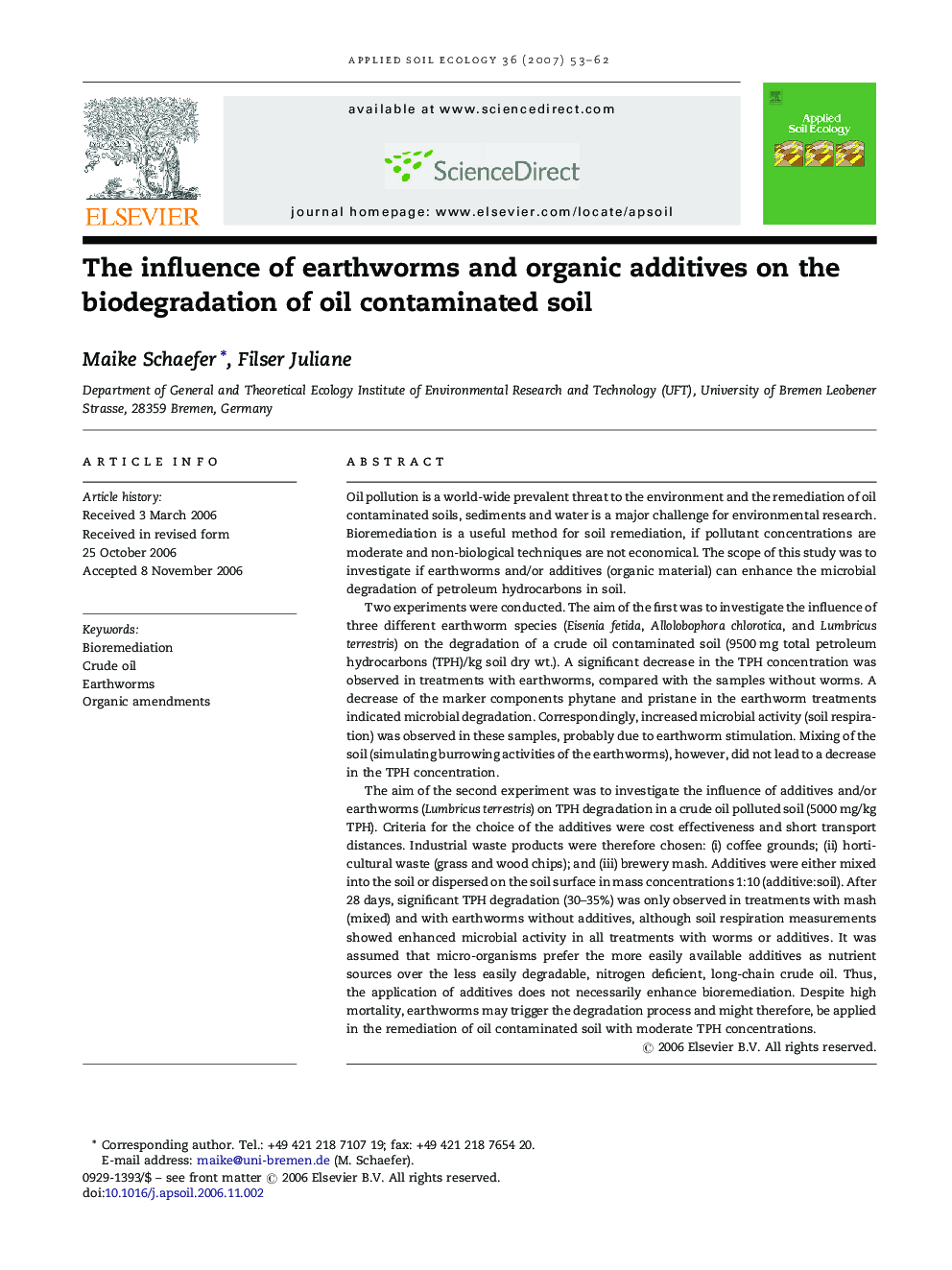| Article ID | Journal | Published Year | Pages | File Type |
|---|---|---|---|---|
| 4383509 | Applied Soil Ecology | 2007 | 10 Pages |
Oil pollution is a world-wide prevalent threat to the environment and the remediation of oil contaminated soils, sediments and water is a major challenge for environmental research. Bioremediation is a useful method for soil remediation, if pollutant concentrations are moderate and non-biological techniques are not economical. The scope of this study was to investigate if earthworms and/or additives (organic material) can enhance the microbial degradation of petroleum hydrocarbons in soil.Two experiments were conducted. The aim of the first was to investigate the influence of three different earthworm species (Eisenia fetida, Allolobophora chlorotica, and Lumbricus terrestris) on the degradation of a crude oil contaminated soil (9500 mg total petroleum hydrocarbons (TPH)/kg soil dry wt.). A significant decrease in the TPH concentration was observed in treatments with earthworms, compared with the samples without worms. A decrease of the marker components phytane and pristane in the earthworm treatments indicated microbial degradation. Correspondingly, increased microbial activity (soil respiration) was observed in these samples, probably due to earthworm stimulation. Mixing of the soil (simulating burrowing activities of the earthworms), however, did not lead to a decrease in the TPH concentration.The aim of the second experiment was to investigate the influence of additives and/or earthworms (Lumbricus terrestris) on TPH degradation in a crude oil polluted soil (5000 mg/kg TPH). Criteria for the choice of the additives were cost effectiveness and short transport distances. Industrial waste products were therefore chosen: (i) coffee grounds; (ii) horticultural waste (grass and wood chips); and (iii) brewery mash. Additives were either mixed into the soil or dispersed on the soil surface in mass concentrations 1:10 (additive:soil). After 28 days, significant TPH degradation (30–35%) was only observed in treatments with mash (mixed) and with earthworms without additives, although soil respiration measurements showed enhanced microbial activity in all treatments with worms or additives. It was assumed that micro-organisms prefer the more easily available additives as nutrient sources over the less easily degradable, nitrogen deficient, long-chain crude oil. Thus, the application of additives does not necessarily enhance bioremediation. Despite high mortality, earthworms may trigger the degradation process and might therefore, be applied in the remediation of oil contaminated soil with moderate TPH concentrations.
